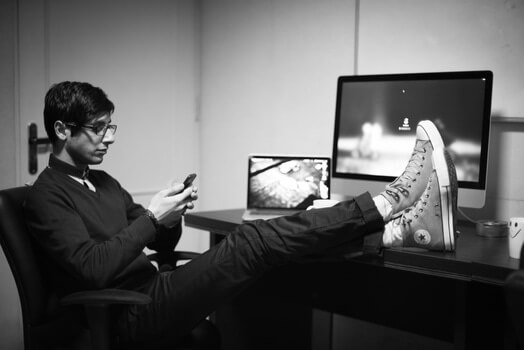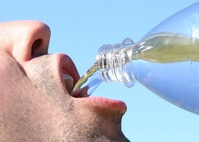
With another year just around the corner, it’s time once again to think about setting “New Year’s Resolutions.” For some of us, losing weight, eating healthier, and being more active is on the wish list toward our ideal self- image. A new year is always a great time for a new beginning, but of course it would be even better if it continued throughout the rest of the year and accumulated over time into progressively better health. Setting the right goals is essential to improving health and feeling successful. The favorite goal for most Americans is losing weight. But losing weight is not necessarily essential to improving one’s health and in many cases any weight initially lost is regained in equal or greater proportion as a person gives up on their drastic diet/exercise routine. Successful lifestyle changes result from small consistent adjustments that can be maintained as part of an overall healthier lifestyle.

Making a commitment to live a healthier lifestyle is not as daunting as many people imagine. Altering small daily habits can result in lasting improvements in health without requiring a full hour of dedicated exercise time in the busy schedule that we all seem to share. Making consistent everyday choices to be more active can make all the difference in your health. Here are some simple suggestions that you can easily fit into your schedule. Choose one or a couple of these suggestions and practice them until they simply become habits. You will likely not lose drastic amounts of weight or put on tons of muscle, but keep in mind that your health includes many more aspects than simply how you look or the number you see on the scale.
1. Park at the far end of the parking lot and walk
You have heard this simple suggestion before, and likely wondered why you should waste your time with that. First of all, you probably save more time doing this than searching for 10 minutes to get the parking spot right next to the door. While driving around, you could have parked a little further out and saved yourself the stress of finding the perfect spot while allowing yourself a couple hundred extra steps of movement. As you progress, you might park farther away and get a five or ten minute walk without taking a lot of extra time from your day. The benefits will increase as your efforts increase.
2. Drink more water
Yes, drinking more water can help you be more active! Not only are most Americans under-hydrated, but drinking more water, especially while working in a sedentary environment, will force you to get up and walk to the restroom regularly and interrupt the long periods of sitting time that fill the day. Interrupting your sedentary time can produce a positive impact beyond that of just going to the gym or exercising somewhere else for a half hour, though being physically active for at least a half hour daily is also recommended.

3. Use your breaks at work
Most teachers have breaks dispersed throughout the day and some form of a lunch break that can be utilized to move more and sit less. If you have the time and opportunity to go to the gym and get a workout that would be awesome, but if not then take some of the time to walk around the school building, the playing fields, a nearby park, the parking lot, up and down the stairs (no elevator), or anywhere else that is convenient. Ten to fifteen minutes can add a lot more movement to your day if you decide to use that time moving instead of sitting. And remember that “walk and talk” breaks with a teaching colleague can be much more inspirational than simply sitting.

4. Set a reminder to get up from sitting
If you get lost in your work and forget to take movement breaks, it helps to set an alarm to remind you to get up and move around. We should all try to move every hour or every half hour to get the blood circulating and get the muscles activated. Getting up occasionally can also help us refocus and work more effectively.
5. Communicate with others in your facility face-to-face
An effective communication strategy that also helps us to stay active is to personally deliver messages to those who are in our same building. Take just a minute to energize your body along with your relationships at work. Instead of texting, emailing, or calling, walk down the hall to deliver messages.
6. Commit a friend to be active with you
Simply telling a teaching colleague, family member or friend that you are going to be more active will help you keep your commitments. Further, having a companion to accompany and motivate you to get up and move, especially when you don’t feel like exercising, can be helpful. Having a “buddy” improves the chances you will meet your lifestyle change objectives.

7. Get up during TV breaks when at home
Commercials are a great time to get up and walk around the house and move. Commercials can be 10% or more of the show’s time. If a movie is one hour you could have exercised your legs for 15 minutes. Taking advantage of small opportunities like this can make all the difference in the long run.
8. Cut out a half hour of TV or video games each day
The average American spends way too much time watching TV and playing video games. We should be able to give-up how many “kills” we get in a video game or what happens in the newest reality show for 30 minutes of activity to improve our health. Again, the way to succeed is to schedule some type of physical activity into our lives to avoid simply allowing technology to control us!
9. Be active during TV time
If you can’t give up watching your favorite show then you can ride a stationary bike, walk in place, or do some simple exercises as you watch the TV without changing your viewing schedule. You could move your exercise equipment into the TV room or put a TV near your exercise area so you can do both at the same time.

10. Create a reward system for being physically active
If being active is a “chore” then make it fun by setting yourself a reward system with desirable rewards (i.e. shopping, spa, dinning out, vacation, etc.). We all need to remember that in the long term, if we don’t spend time and money being healthy now, we will certainly be forced to spend lots of time and money later on our medical expenses and inability to do daily functions.
11. One bag at a time
With a car full of groceries how many of us try to carry as many as we can on each hand to the house? Instead just carry one bag at a time, making more trips from the car to the house. Carrying one bag increasing movement will decrease the chance of dropping a bag, falling, tripping, and/or opening/closing doors.
12. Walk to the store, friend’s house, or gym
The average American will drive their car before walking two blocks. What happened to walking or riding our bikes to the grocery store, park, school, or friend’s house? Is it not socially acceptable, weather too hot/cold, don’t have time, too exhausting, worried about sweating? Too many excuses. Remind yourself that going for a walk and spending a little time outside is a good thing.
Trying a few of these ideas will help rejuvenate your life by adding some physical activity and breaking up the numerous hours of sitting! Good luck with your new goal to a healthier and happier you!
Selected references
Cooper, A. R., Sebire, S., Montgomery, A. A., Peters, T. J., Sharp, D. J., Jackson, N., & … Andrews, R. C. (2012). Sedentary time, breaks in sedentary time and metabolic variables in people with newly diagnosed type 2 diabetes. Diabetologia, 55(3), 589-599. doi:10.1007/s00125-011-2408-x
Gaesser, G. A., Tucker, W. J., Jarrett, C. L., & Angadi, S. S. (2015). Fitness versus Fatness: Which Influences Health and Mortality Risk the Most? Current Sports Medicine Reports, 14(4), 327-332. doi:10.1249/JSR.0000000000000170
Hamer, M., & Chida, Y. (2008). Walking and primary prevention: a meta-analysis of prospective cohort studies. British Journal of Sports Medicine, 42(4), 238-243.
Owen, N., Sugiyama, T., Eakin, E. E., Gardiner, P. A., Tremblay, M. S., & Sallis, J. F. (2011). Adults’ sedentary behavior: Determinants and interventions. American Journal of Preventive Medicine, 41(2), 189-196. doi:10.1016/j.amepre.2011.05.013
